The manuscript currently preserved in our library under the shelfmark Isl. Ms. 350 has a fascinating history that can be traced in internal owners’ marks and external documentary sources. The compact volume carries a richly illuminated copy of a selection of Persian poetry gathered under the title Ganj al-maʻānī, or "Treasure trove of Sublimities."
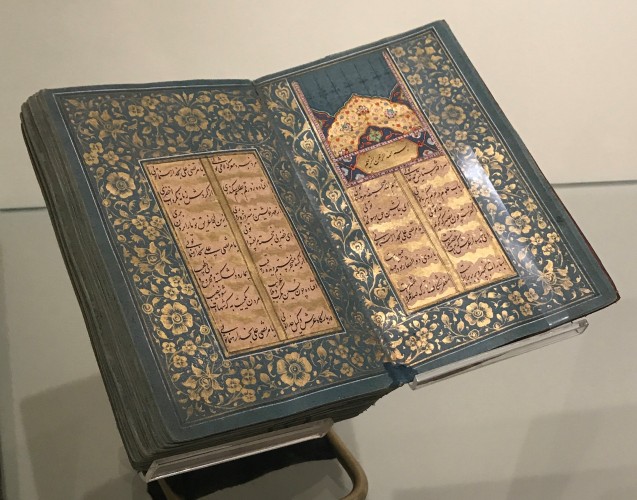
Illuminated double-page opening of Isl. Ms. 350,
on display in the exhibit "Storied Acquisitions"
As we have seen in a previous post, the manuscript passed through the hands of a series of Indian, British and Turkish owners, primarily by gift or bequest, to make its way from Delhi to London and from London to Istanbul.
In this post, we'll explore how the manuscript reached Ann Arbor by way of Italian and Egyptian book dealers along with the other manuscripts of the so-called "Abdul Hamid Collection."
The initiative for this acquisition came from none other than the university's own professor Francis Wiley Kelsey (1858-1927), a respected classicist and archaeologist who not only involved himself in visionary projects in service of scholarship but also of general humanitarian concerns.[1]
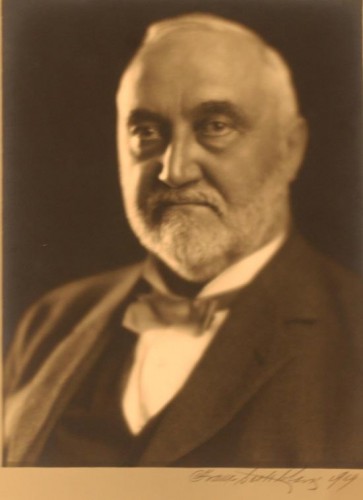
"Portrait of F. W. Kelsey, Kelsey Museum Archives."
Image courtesy Kelsey Museum of Archaeology
As director of Near East research (1919-1921), Kelsey raised funds for the University’s first archeological expedition to the Near East, and thereafter supervised each year’s excursion, including the excavations at Antioch of Pisidia, Karanis in Egypt, and Carthage in 1924-1926. His passion for collecting antiquities and his tireless fundraising efforts allowed him to build a remarkable collection now housed by the museum that bears his name. In addition, Kelsey was responsible for the initial purchases that now form the basis of the University’s world-renowned Papyrology Collection-- the largest in North America.
While Kelsey is well-known for his collecting activities in classical antiquities and papyri, the University of Michigan also has him to thank for the core of its Islamic Manuscripts Collection, beginning with the so-called "Abdul Hamid" manuscripts that include Isl. Ms. 350.[2]
The story begins in 1923, when Kelsey was offered an exquisite collection of Arabic, Persian and Turkish manuscripts by the famous Cairo-based collector and antiquities dealer Maurice Nahman (1868-1948).[3]
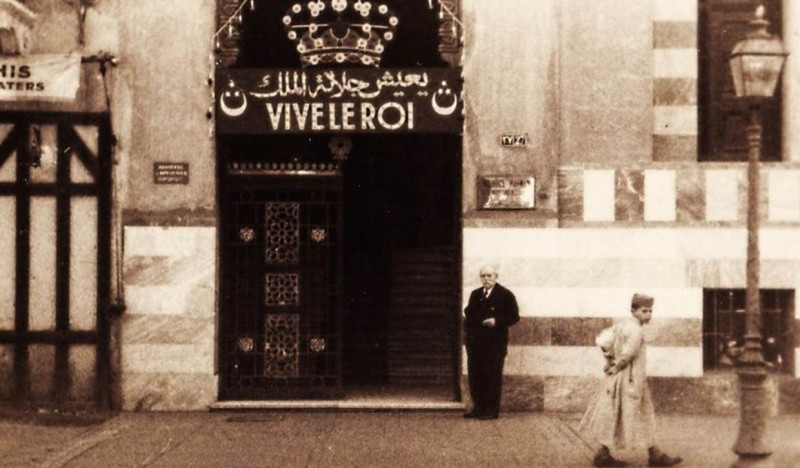
"Maurice Nahman in front of his Gallery in Cairo around 1940" Image courtesy Galerie L'Ibis
In his offer to Kelsey, Nahman apparently claimed that the manuscripts had come from the personal collection of the deposed Ottoman sultan Abdülhamit II (r.1876-1909). He later identified the former owner as “Halis Pacha of Constantinople,” again presumably intending Sultan Abdülhamit II.[4] Kelsey thus came to refer to the manuscripts as the “Abdul Hamid Collection.”[5]
Nahman had apparently obtained the manuscripts from the famous Florence-based bookseller, book collector and binding scholar, Tammaro De Marinis (1878-1969).[6]
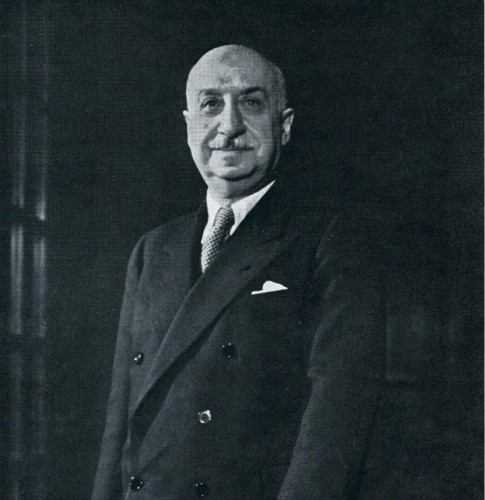
Portrait of Tammaro De Marinis (1878-1969) from
Quinto Congresso internazionale di bibliofili, Venezia 1-7 ottobre 1967, Nereo Vianello, 1970
Image courtesy Biblioteca comunale dell'Archiginnasio.
According to the antiquarian book dealer W. M. Voynich, De Marinis had been authorized by the elder James Pierpont Morgan (1837-1913) to travel “to Constantinople in quest of valuable manuscripts” and he returned to Italy with a large number. By this time however, Morgan had fallen gravely ill and refused to consider the purchase. Though De Marinis gave Voynich to understand that the collection was not of much value, Nahman claimed that De Marinis had paid £12,000 for the lot and had offered them to Morgan for £40,000 .[7]
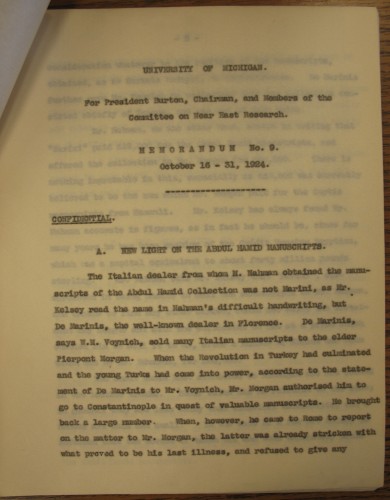
"New Light on the Abdul Hamid Manuscripts," Opening section of Kelsey Memorandum No. 9 (16-31 Oct 1924), University of Michigan Library Special Collections Administrative files
Nahman further told Kelsey that De Marinis proceeded to offer the manuscripts to the Egyptian government, but after months of negotiation they proposed purchase of only a small portion of the collection. Owing to the custodian’s wish that the manuscripts remain together, the government’s proposal was declined and the manuscripts were purchased by Nahman at a price that allowed him to then offer them to Kelsey. [8]
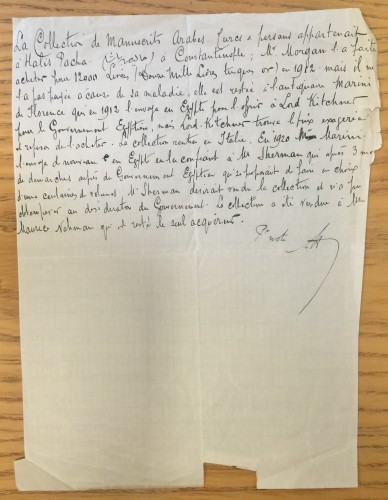
Note, handwritten in French, seemingly signed by Nahman. University of Michigan Library Special Collections Administrative files, folder “Islamic Manuscripts: Acquisitions & General.”
Kelsey had already purchased a significant number of papyri from Nahman, and upon the offer of manuscripts he eagerly attempted to find a buyer in the hopes of further stimulating Nahman’s interest in collecting papyri for the University of Michigan to purchase.
After prospects with other buyers fell through, including James Pierpont Morgan, Jr. (1867-1943) and Yale University, Kelsey encouraged the British Museum to make the purchase in cooperation with the collector Chester Beatty (1875–1968). Kelsey was already engaged in collective purchases of papyri with the Museum, having established favorable relations with the director Sir Frederic Kenyon (1863-1952), a fellow classicist with a tremendous interest in New Testament papyri. In the early part of May 1924, Kenyon dispatched Edward Edwards (d.1944) to examine the collection. A distinguished former pupil of E.G. Browne and noted Persian scholar in his own right, Edwards served for 31 years (1904-1935) in the Museum’s Department of Oriental Printed Books and Manuscripts and contributed to the preparation of several of its catalogues. Upon Edwards’ incredibly favorable appraisal of the collection’s significance, Kelsey was persuaded to consider a share in the cooperative purchase along with the British Museum and Chester Beatty.[9]
Kelsey was then able to prevail upon a longtime benefactor of the University of Michigan, the wealthy Detroit lawyer and philanthropist Horace H. Rackham (1858-1933), who had made his fortune as an early investor in Henry Ford’s then fledgling enterprise, to supply the funds for the purchase. Rackham preferred to remain anonymous initially and it is only subsequent archival research that has revealed his contribution.[10]
Once purchased, the 411 “Abdul Hamid” manuscripts were then divided among the three parties, with approximately 67 going to the British Museum, 54 to Chester Beatty, and 290 to the University of Michigan.[11]
Among the 290 manuscript volumes purchased by Michigan was Isl. Ms. 350. Like most of the other manuscripts, it still bears on its front flyleaf a penciled mark associating it with the book seller De Marinis, but it bears no marks definitively associating it with Sultan Abdülhamit II. [12]

"365 T. De M. [i.e. Tammaro De Marinis]" in pencil, recto of front flyleaf in Isl. Ms. 350
The physical manuscript is thus now preserved in Ann Arbor, and accessible to any who visit our reading room.
Further, the manuscript is fully and freely available for perusing digitally, and may be browsed or downloaded in its entirety via the HathiTrust Digital Library.
And remember, you can also see Isl. Ms. 350 in person in our exhibit “Storied Acquisitions: Highlights from the University of Michigan Library Collections” (on display through 30th August)!
[1] See the finding aid for the "Francis Willey Kelsey papers, 1894-1953,” Bentley Historical Library, The University of Michigan; Ward W. Brigs, “Kelsey, Francis Willey,” American National Biography Online (Feb. 2000), available online ; “Francis Kelsey,” History. The Kelsey Museum of Archeology, available online at http://lsa.umich.edu/kelsey/about-us/history/francis-kelsey.html ; John Griffiths Pedley, The Life and Work of Francis Willey Kelsey: Archaeology, Antiquity, and the Arts, Ann Arbor: University of Michigan Press, 2012 ; and the online exhibition A Man of Many Parts: The Life and Legacy of Francis Wiley Kelsey.
[2] For a fuller account of the so-called Abdul Hamid acquisition, see Roberta L. Dougherty, "Islamic Manuscripts at the University of Michigan: Summary of Collection History" (ca. 1993) available online.
[3] For more on Nahman, see p.259 ff. in Elizabeth Dospěl Williams, "'Into the hands of a well-known antiquary of Cairo': The Assiut Treasure and the Making of an Archaeological Hoard," West 86th: A Journal of Decorative Arts, Design History, and Material Culture 21, 2 (Fall-Winter 2014): 251-272. https://doi.org/10.1086/679985. Kelsey had been introduced to Nahman by Charles L. Freer (1854-1919). For sources on the relationship, see footnote 3 in Dougherty ca. 1993.
[4] For a brief account by Nahman of the collection and its provenance (including the association with "Halis Pacha"), see the note on ledger paper, handwritten in French, apparently with his signature, housed in the University of Michigan Library Special Collections Administrative files. Further details are to be found in the correspondence between Kelsey and Nahman held in the Bentley Historical Library (Francis Willey Kelsey papers, 1894-1953).
[5] See for example p.6 in Francis W. Kelsey, University of Michigan Near East Research Memorandum No.3 (May 1-May 15 1924), University of Michigan Library Special Collections Administrative files.
[6] See Neil Harris, "De Marinis, Tammaro." In The Oxford Companion to the Book, Ed. Michael F. Suarez, S.J. and H. R. Woudhuysen (Oxford: Oxford University Press, 2010), available online.
[7] See p.1-3 in Kelsey, University of Michigan Near East Research Memorandum no.9 (October 16-31, 1924) and p.14-15 in Kelsey, University of Michigan Near East Research Memorandum No.1 (March 20 to April15, 1924), University of Michigan Library Special Collections Administrative files.
[8] See Nahman's handwritten note on ledger paper, University of Michigan Library Special Collections Administrative files, and Dougherty ca. 1993.
[9] See p.14-18 in Kelsey, University of Michigan Near East Research Memorandum no.1 (March 20 to April 15, 1924) and p.3, 10-13 in Kelsey, University of Michigan Near East Research Memorandum no.4 (May 16-July 31, 1924), University of Michigan Library Special Collections Administrative files. On Edwards, see paragraph 13 in Evyn Kropf "The Yemeni manuscripts of the Yahuda Collection at the University of Michigan: provenance and acquisition." Chroniques du manuscrit au Yémen no 13 (janvier 2012), available online https://cmy.revues.org/1974.
[10] Evidence for this appears in Kelsey's corresponance with Rackham, held at the Bentley Library, which Roberta Dougherty has identified ; see p.5 of her unpublished paper "Oriental manuscripts at the University of Michigan" (available online). Kelsey was also able to prevail on Rackham's generosity to fund the purchase of the Yahuda Collection, and in related correspondence refers to the "former collection already paid for" i.e. the Abdul Hamid manuscripts. See Francis W. Kelsey to Mr. & Mrs. Horace H. Rackham, 4 November 1926, Box 2, Francis Willey Kelsey papers, Bentley Historical Library, University of Michigan and paragraph 24/25 in Kropf 2012.
[11] See p.15 in Kelsey, University of Michigan Near East Research Memorandum no.8 (October 1-15), University of Michigan Library Special Collections Administrative files.
[12] At Michigan, the "Abdul Hamid Collection" designation has remained though the association with Sultan Abdülhamid II as born out by internal evidence within the manuscripts themselves can only be considered tenuous. Thus far, only four manuscripts have any confident association with Abdülhamid -- the four albums that may have been bound in the Yıldız Palace workshop, possibly for him or someone within his circle, Isl. Ms. 438, 439, 440, and 441 (all available online) -- and by contrast a range of other owners from Ottoman and Persianate areas are confidently represented. Apparently the portion acquired by the British Museum may have been similarly composed cf. Arundell Esdaile in The British Museum Library, A Short History and Survey (London: Allen & Unwin, 1946), p.303 "1920, the so-called Sultan's Library from Constantinople, an assemblage which contained a very few volumes from that library."